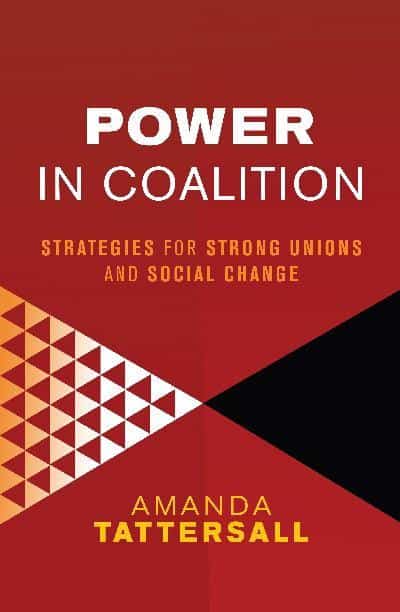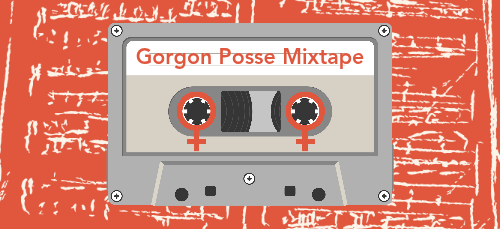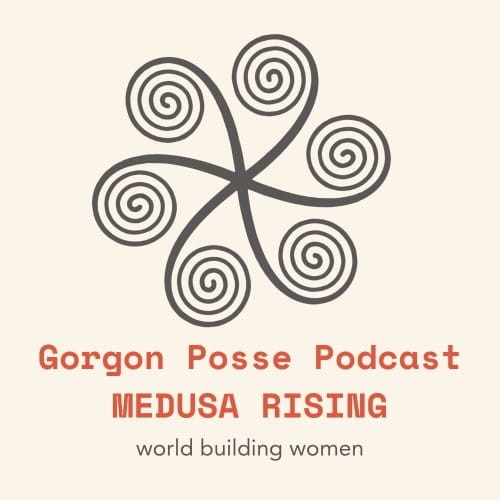Sisterhood / Coalition 5 |by Esmée Streachailt
The opposite of this hardening and isolation is not fusion and gumminess. That happens inside the hardened identity in unconscious and unexamined ways.

As I said earlier in this series, I'm not the only one thinking about the difference between the supportive bonds of sisterhood and the practical orientation of coalition. Kay Green is thinking about it in this post, Starhawk is thinking about it in this series. (Very recommend the Starhawk on Building Welcoming Movement.) I suspect the conflation of them in our concepts of our work has lead to a lot of conflict: an alteration practical goal is taken as a betrayal of intimate bonds (and it can be, but jumping there right away often means no way back). This isn't the whole of intra-feminist conflict, obviously, since very real political and cultural commitments are stake. I just think adding the pressure of (my concept here) sisterhood intensifies schisms and their durability. Let sisterhood be much deeper, and more personal, than coalition.
The concept of "ally" can work this way, too. Especially in the contemporary era. Allies, like sisters, are supposed to agree with us, even feel with us, have exactly the same priorities as us, all the way. Dress and present alike. Reject the same things. Say all the right words. Even fuck correctly. And that's not what that word means. It's for sure not what sisterhood should mean. Because that's not how diverse groups of humans work — at all. This expectation gets labeled 'safety' and pretty quickly slides into us/them, puritanical, and punishing forms of identitarianism. All that patriarchal hardening and isolation. Anything but safe.
The opposite of this hardening and isolation is not fusion and gumminess. That happens inside the hardened identity in unconscious and unexamined ways. The opposite of these demands for sameness is flexibility, flow, difference taken for depth and power, even contingency, as long as they're all oriented in a conscious and deliberate way. This what I thought intersectionality would lead to, and it's what I want strategic intersectionality to lead to.

Strategic Intersectionality is basically coalition organizing and essential to this less identarian and reactionary kind of intersectionality. Imagine that in the image above, each set is giving energy to a shared project. They're not becoming one. They're doing one thing, for now. At other times, in other areas, they do other things. The key is not to get in the way of the shared project (at a minimum) when doing those other things.

Do not sleep on the resources at The Commons!!
One of the powers of coalition is that it's contingent, it's specific to a defined, attainable goal or at most definable social change. And then, and this is key, the coalition can dissolve. Not the world wide liberation of women (though, yes) but a 100 fold increase in the prosecution of sexual violations against women and girls with special attention marginalized and racialized women and girls. Feel the difference? Or, in another direction: not increased safety, but establishment of 100 new somatic grounding and self-defense courses.
Ideally, the other members of the coalition do not have other goals that deeply conflict across members. For example, several groups want to work to end the child transition industry, but one of those groups works for women's total reproductive autonomy and another works to end abortion rights, or takes funding from such groups. That coalition might not be wise for two reasons.
- The tensions and antagonisms of these conflicts might lead to cracks and weaknesses in the coalition, and therefore limit its effectiveness.
- The more deeply pocketed and politically established member/s of the coaltion might (as often happens) simply coopt the efforts and even larger identity of the smaller groups.

This link is a PDF.
Coalitions are never necessary just because an issue is urgent. Any group or entity using guilt or shame to force team support or coalition is not looking for equals but for subjects, not for collaboration but for resources. A healthy coalition can "hunt as a pack" because they do not demand conformity and compliance that require policing, but agreement and alignment that require communication and alignment. In coalition, every organization/member must have equal standing and influence on the issue around which they organize and clearly coordinated areas of work.
Yes, one of the pressures on feminists is always that there are too few of us actually doing movement, so we're operating in a crucible of a small world. We are often the only women/people we know where we can actually relax, but then we also have the stress of the work we're doing. I'm hoping that building a more intentional boundary between our support and our work will help RadMatFems do both better.
One advantage of coalition is that it lets us remember that every woman is still surviving in patriarchy, and that requires compromise, and women will grow away from that compromise as their emotional history and material circumstances allow. We must not judge that. Sisterhood can be a relation based in supporting women as we disentangle ourselves from patriarchal feminine socialization (support, not demand).
But, we don't have to work with every woman or organization who comes along either. Coalitions are above all deliberate, intentional, and succeed to the degree that they are guided by their goals. Collaborations that could weaken the whole, or water down the goal (or, Medusa forbid!, gut it of meaning) should be considered very, very carefully if at all.
A RadMatFem approach to coalition building could begin with these principles:
- A clearly articulated issue and goal that
- benefits women and girls first while
- never taking in more members than necessary and
- articulates approaches & outcomes that accounts for demographic differences by
- both working across differences and describing best outcomes with them in mind and that
- defines the steps to the goal and timeline for work
- guided by the goal and tailored to the target agency/group/institution while
- guarding against distraction/cooptation by groups with antagonistic goals or broader projects & commitments.
Remembering to value each woman, to celebrate even the little wins, to let each member organization work to its strengths, and make that target agency love your support and tremble in wimpering fear of your disapproval. One great thing a coalition can do is amplify messaging ;)
Women's needs and conditions have been ignored for so long because larger institutions do not want to honor our demands (at all) on feminist terms. I think we have to take caution in our coalitions, and build them to last by saving time-space for sisterhood outside coalition work and by refusing any potentially compromising alliance. We have to respect our work and dreams for women because no one else will.
Maybe this post moved you? Would you like to dedicate it in the name of an ancestor, sister, sister-friend, lover, daughter? Use Eopsin's Ward to have your dedication added here.
Add your voice to this Gorgon chorous? Visit Contribute.






